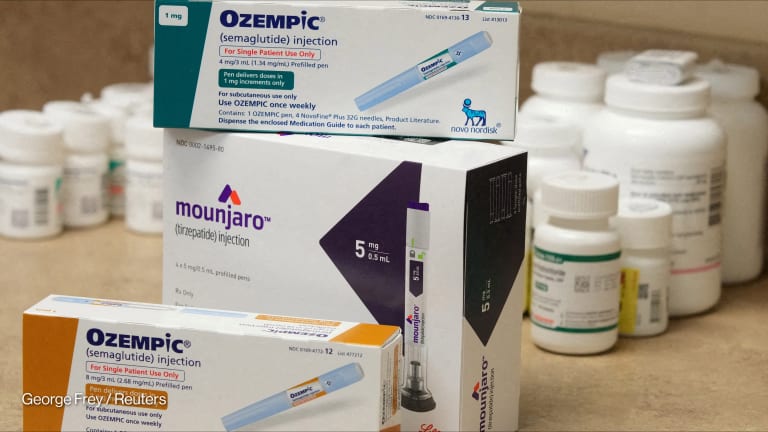
I’ve worked in different fields of health care, many with daunting challenges, including malaria, HIV and cancer. Now I work on a problem that is exasperating for the simple fact that we have a safe drug that is 90 percent effective, costs pennies a day, and is in plentiful supply, and yet 80 percent of the world lacks access to it.
Morphine and other opioids are considered an essential medicine by the World Health Organization and are the only recommended treatment for moderate to severe pain, such as that experienced by 50 percent of people dying of AIDS and 80 percent of those dying of cancer.
And yet, worldwide, at least 3.3 million of people dying of HIV or cancer in pain do so without pain treatment. Three billion people live in countries where consumption of morphine and similar opioids is insufficient to treat even 25 percent of the deaths in pain from these two diseases, and 59 million people live in the 24 countries where consumption of these drugs is zero.
Think that maybe poorer countries have less need than high-income countries? Nope. Low- and middle-income countries are home to 70 percent of the cancer deaths and 99 percent of the HIV deaths, and they consume just 7 percent of the opioids. For most people dying of cancer in the lower-income countries, pain relief doesn’t get any more sophisticated than Advil or Tylenol – medications we use to treat hangovers.
Barriers to access
The reasons that morphine and other opioids are not available to patients in pain have been consistently described across different countries and over several decades. Weak health systems, legal and regulatory restrictions, poor market conditions, inadequate training of health workers, excessive concern about diversion and abuse, and cultural misperceptions about pain operate together to create a web of barriers that force millions to live and die in the most inhumane of conditions: agonizing pain.
A lot of the challenges in providing pain relief are common to other health challenges. Finding solutions to these problems are prerequisites to attaining a reasonable standard of health throughout the world.
Opportunities
Engineer around market failures
Although low-cost, off-patent drugs like morphine are the ideal for widely used products provided in public sector health programs, they can be difficult to scale up because the marginal profit on each dose is minimal. For opioids, current volumes are low, so drug suppliers who wish to enter a national market will need to make initial investments to register and market their product, but will need to wait until demand increases before they can expect to see a profit.
Pain relief lacks the guaranteed demand generation that we saw in HIV drugs from the U.S. President’s Emergency Plan for AIDS Relief and the Global Fund to Fight AIDS, Tuberculosis and Malaria, so we need to find new ways to entice suppliers to enter a low-volume, low-profit market whose growth is uncertain.
Commoditize information
Despite decades that have seen great innovation in health care delivery, we continue to train health workers in an outdated, expensive and largely ineffective way. We fly them to large cities, put them in hotels, hand out per diems, and lecture at them with boring PowerPoints about a drug or device they don’t have at their site yet. Once you account for administrators who don’t treat patients, those who are reassigned to another program a few weeks later, those who don’t get the drug or device for another six months, and those who simply sleep through the training, we are paying lots of money to move a little information.
We need approaches that treat information as a commodity and to figure out how to move information where we need it, when we need it, and at the lowest cost. New technologies based on mobile computing will undoubtedly provide new opportunities to transform these outdated training models.
Deliver health care to rural populations
Reaching the patients who need pain relief continues to be a challenge. In many countries, cancer care and pain relief are only available in the capital. Patients in pain and those at the end of life are least able to endure the 20-hour bus ride to the central hospital or the five-hour wait in the sun that is a standard feature of outpatient health care delivery. As a result, the vast majority die at home (I won’t say “choose to die at home” because it was never a choice).
We need to find ways to meet our patients where they need us and to develop care models that don’t deprive rural patients of essential medical care.
Generate demand
In pain treatment, we suffer from a frustrating lack of demand. Patients, their families and health care workers have been conditioned to see pain as a necessary part of illness and an unavoidable fact of life. Health care workers adapt to morphine-free burn and cancer units by convincing themselves that patients are just happy to get health care and don’t mind the suffering. And patients and health care workers believe drugs like morphine to be more dangerous than they are, citing rates of diversion and abuse many times higher than what has been documented.
We need to do better at learning how to amplify the voices of patients so that they are better heard by health care workers and in turn, the government. And we need to figure out how to market improvements in clinical quality of care so that it is desirable to patients and health care workers.
Build national capacity
We also struggle with limited capacity in national health care delivery. Understaffed and overwhelmed ministries struggle to navigate the bureaucratic labyrinth that the United Nations has created to monitor the import of controlled medications, keep accurate records on the storage and use of the drugs, distribute them safely to health facilities, and update treatment guidelines and clinical training.
The limited budget of health ministries and the resultant limitations on their capacity is not a challenge that we can keep dancing around with international consultants and memorandums of understanding. National leadership is the only solution to solving health challenges and is a prerequisite to making access to pain relief a reality.








